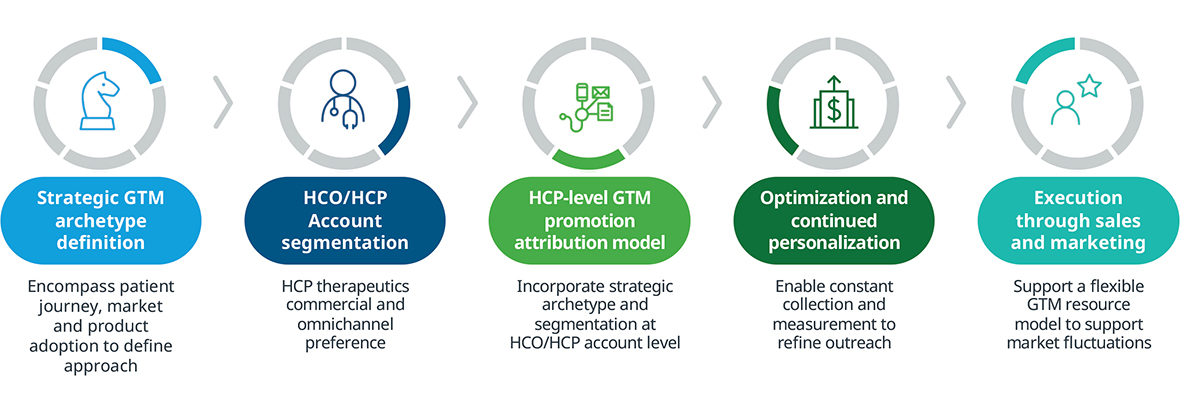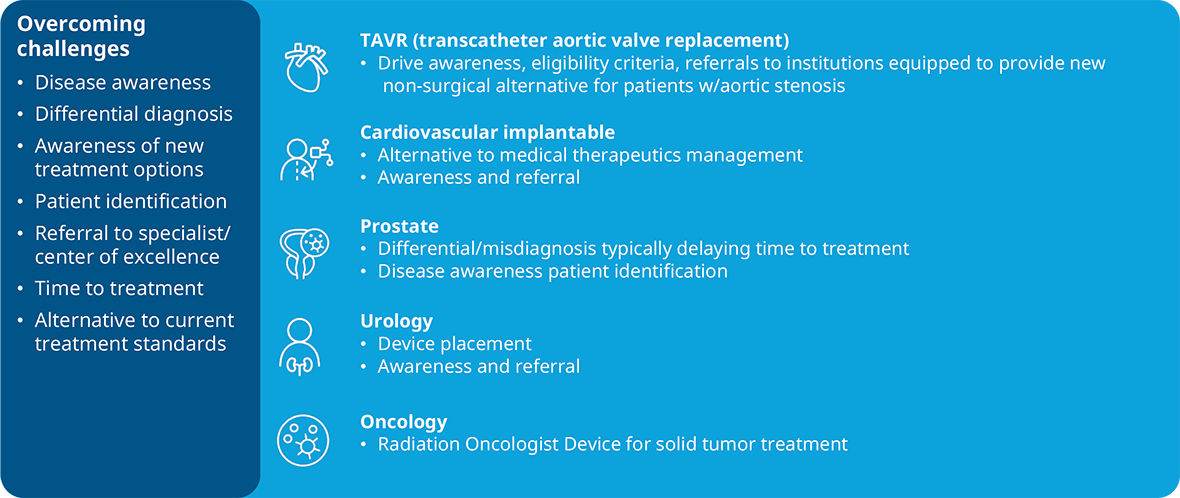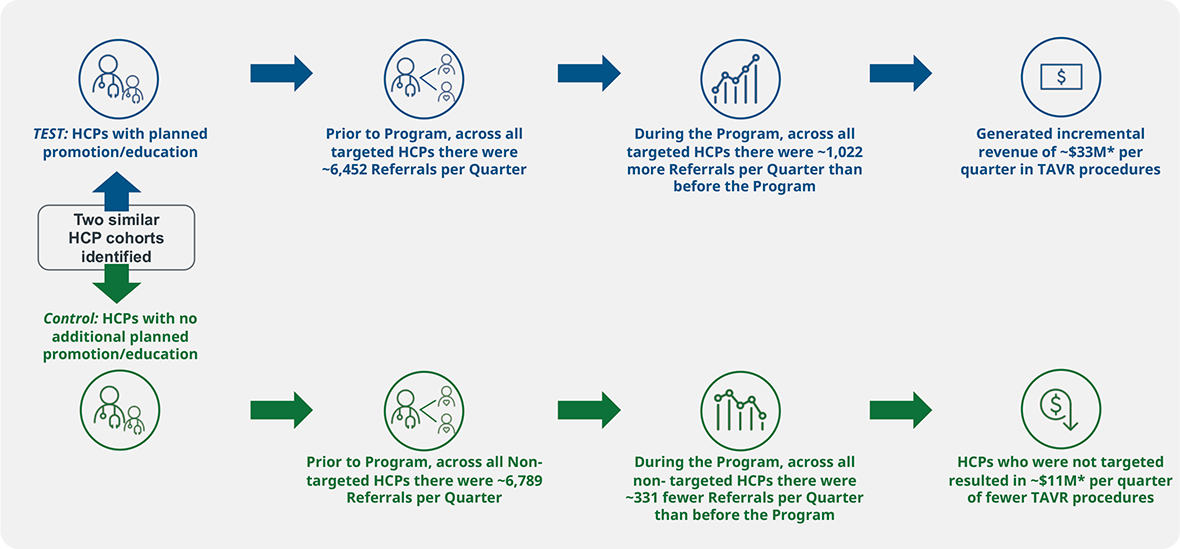Leapfrog the competition by proving the value of your products


















- Locations
- United States
- US Blogs
- Transforming MedTech Promotional Efforts
In the face of new trends in the market, many MedTech organizations are transforming their promotional efforts by prioritizing their highest-cost resources to work on the highest-value activities.
This means looking at healthcare organization (HCO) and healthcare provider (HCP) segmentation differently, beginning by defining archetypes with the patient journey, the market, product adoption, HCP attributions, and what drives activation for that archetype.
Then, once the archetypes are established, the goal is to optimize the value of each one with appropriate outreach and activation, executed with the sales and marketing team working together.
Many MedTech organizations are trying to solve the problems of resource deployment in a resource-constrained environment; the appropriate non-personal investment with HCPs, as well as the appropriate investment with patients and consumers to increase the likelihood that motivated patients will get through the referral system faster, and ultimately, to a device solution. Transforming promotional efforts can help solve these challenges.

Matching the highest-value resources to the highest-value activities
The market environment right now is challenging. To thrive within it, MedTech companies desire to transition from a more traditional manufacturer go-to-market strategy to a more flexible, value-based HCP account engagement strategy. The challenge of constrained resources in an environment of economic uncertainty can be addressed by deploying higher-cost resources — who are incredibly valuable and have deep experience — to the highest-value activities. This frees them up from doing lower-value (but still important) activities, which can then be assigned to a lower-cost resource.

This flexible option for resource deployment allows the most valuable resources — internal teams — be dedicated to the institutions, alternate sites of care, adoption, and utilization (including procedural consultation). Some of the lower-cost resources are then engaged with direct promotion to physicians who are involved with referring patients into that network.
Among IQVIA MedTech clients, this new approach has reduced costs and improved return on sales investment at the same time – and it’s not necessarily limited to field sales. IQVIA MedTech has also seen success with this approach in inventory management and other areas of the business.
Leveraging lower-cost resources to support patient referral to device centers
MedTech companies are now using precision targeting and lower-cost field resources to educate HCPs on earlier referral along the patient journey. Multiple IQVIA MedTech clients have asked for help creating greater awareness around the disease state and the new treatment options available to encourage earlier referrals and make connections with centers of excellence and specialists.

They’re achieving this by looking at claims data and prescribing information to better segment and target the referral network, ultimately determining the best areas to engage these physicians for better understanding of the disease, better or earlier patient identification, and quicker referral into the network for the maximum treatment options. They’re seeing improvement in the time to treat — and much better patient outcomes.
This is proof that customized go-to-market solutions can help accelerate treatment paradigm shifts.
IQVIA MedTech even conducted a test at one MedTech organization. It identified two similar HCP cohorts and introduced a specialist referral team — a lower-cost resource — who delivered additional promotional education to the test cohort and made no changes to promotional activities with the control cohort. The additional promotional effort generated about $33 million in incremental procedural revenue.

Across several therapeutic areas, MedTech organizations are engaging with lower-cost resources to drive higher-value movement of patients to the referral network, and ultimately to better patient outcomes. This model also frees up internal manufacturer teams to focus on leveraging omnichannel capabilities and other strategies to create incremental value.
You may also be interested in
Ten MedTech Trends to Watch in 2023
Dynamics that the MedTech industry should monitor in the coming year
Contract Sales and Medical Solutions
Data-driven, flexible support solutions for your commercial success
Related solutions
Deploy sales representatives, clinical nurse educators, field reimbursement specialists virtually or in the field to communicate the benefits of your therapy.

